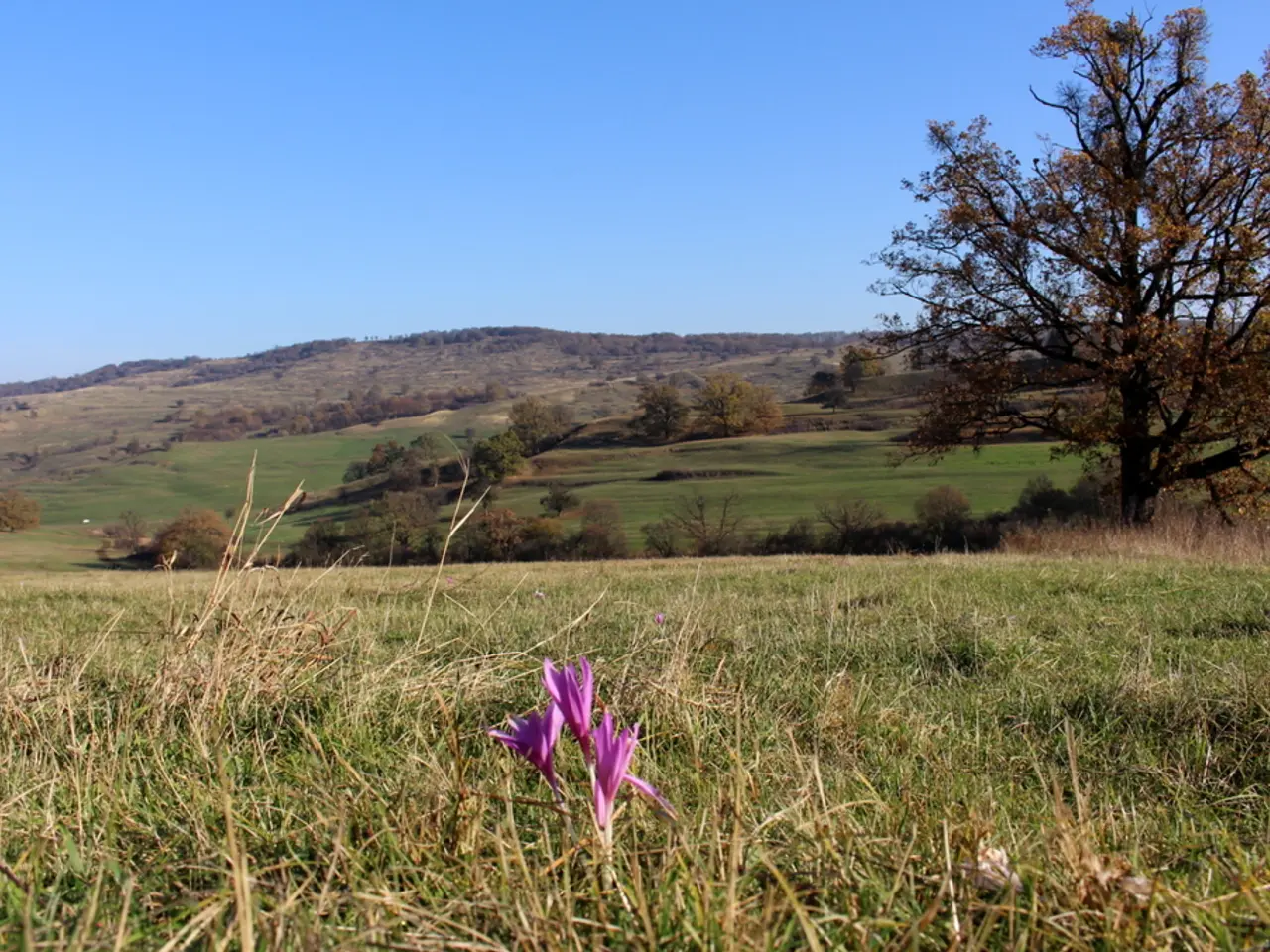Twelve flowers resilient to deer, flourishing healthily without the use of strong chemicals.
In the quest for a beautiful and thriving garden, deer can pose a significant challenge. However, with the right selection of plants and some strategic planning, it is possible to create a deer-resistant garden that not only deters these animals but also offers a stunning display of blooms. Here's a guide to help you achieve just that, using a variety of flowers such as Lavender, Foxglove, Russian Sage, Bleeding Heart, Yarrow, Peony, Coneflower, Daffodil, Catmint, Butterfly Bush, Black-Eyed Susan, and Lamb's Ear.
Many of these plants are naturally deer-resistant due to their strong scents, textures, or toxicity. For instance, the Butterfly Bush is well-known for repelling deer because of its scent and texture, while Lavender, Russian Sage, Catmint, and Yarrow also have strong fragrances and textures that deer usually avoid. Daffodils are toxic and generally unpalatable to deer, and Coneflower, Black-Eyed Susan, and Lamb’s Ear are often less favored by deer because of their foliage texture and taste.
However, some plants like Peony, Foxglove, and Bleeding Heart may experience occasional deer browsing depending on deer pressure and local conditions, so extra protection may be needed.
To enhance deer resistance in your garden, follow these guidelines:
1. Use a mix of these deer-resistant plants to create diverse foliage and scents that discourage deer browsing. 2. Incorporate physical barriers such as fencing (at least 6 feet tall) or spiky hedges to keep deer out, especially if deer are very active in your area. 3. Add repellents or deterrents like human hair bags or natural sprays that exploit deer’s aversion to human scent. 4. Plant dense groupings of deer-resistant plants to create a less inviting environment. 5. Avoid planting deer favorites alongside these resistant plants, as deer may feed on the preferred species and then move on.
By combining these flowers with physical barriers and repellents, you can create a functional, aesthetically pleasing garden that minimizes deer damage while showcasing beautiful blooms like Butterfly Bush, Lavender, and Black-Eyed Susan.
In addition, some plants require specific care to thrive. For example, Coneflowers benefit from division every 3-4 years to maintain vigor, while Catmint produces lavender-blue flowers above aromatic, gray-green foliage that deer consistently avoid and starts blooming in late spring and continues through summer if properly maintained. Black-eyed Susans bring golden-yellow petals surrounding dark brown central cones, creating cheerful summer-to-fall color that deer typically ignore and thrive in full sun and average soil, requiring minimal maintenance once established.
By understanding the unique characteristics of each plant and implementing these strategies, you can create a deer-resistant garden that not only stands up against deer but also provides a beautiful and vibrant outdoor space for you to enjoy.
A home-and-garden lifestyle that incorporates a deer-resistant garden can offer a stunning display of blooms while deterring deer. By using a variety of deer-resistant plants like Butterfly Bush, Lavender, and Black-Eyed Susan, strategic planning such as creating diverse foliage, using physical barriers, and adding repellents can help minimize deer damage.








